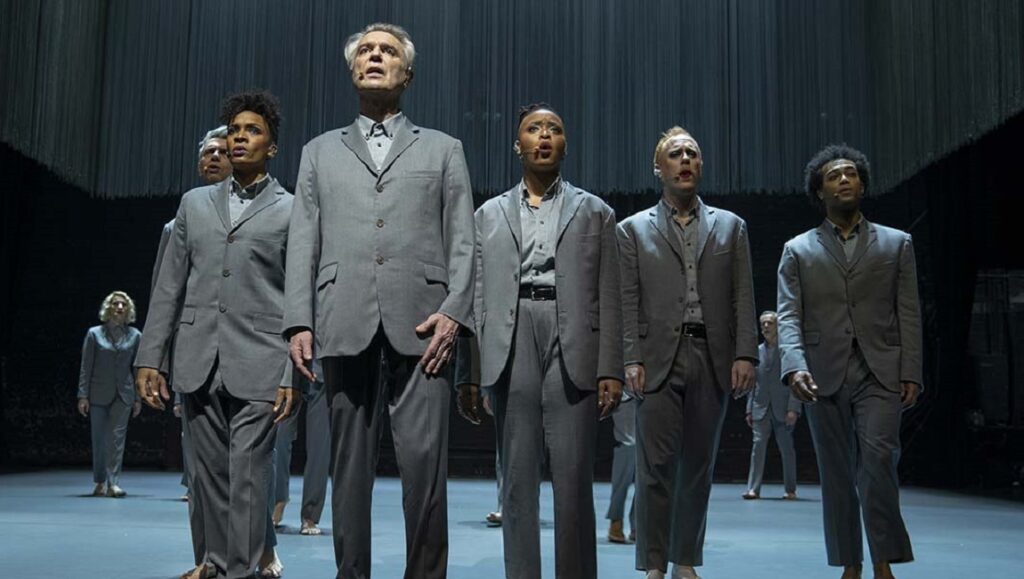In the midst of the annus horribilis of 2020, with the US still being ravaged by a global pandemic, all manner of racial strife, a severe economic crisis, and a supremely mendacious and inhumane presidential administration lording over it all, releasing a film entitled American Utopia would seem to be a bitter, ironic joke. That this is in fact not the case is a testament to the singular achievements of the work’s creators, director Spike Lee and musician David Byrne, who have crafted one of the most transcendent experiences to be found on any size of screen this year. American Utopia is based on Byrne’s Broadway show of the same name, and in the hands of Lee, cinematographer Ellen Kuras, and editor Adam Gough, it becomes a thrilling cinematic experience: the camera swoops above, underneath and in between the performers, affording a unique and electric view that would be impossible to experience as an in-person spectator.
Byrne made his previous indelible impression on cinema as frontman for Talking Heads in Jonathan Demme’s Stop Making Sense, arguably the greatest concert film ever made, and so it follows that some elements of American Utopia can’t help but be interpreted as conscious callbacks to that earlier masterwork. It opens, just like Demme’s film, with Byrne alone on the stage, only here he’s singing his opening number “Here” to a plastic model of the human brain, marveling in song about its intricate connections and functions. Afterward, Byrne observes that babies have more neural connections than adults, and he defines growing up as the process of losing neurons, paring down to our precisely-sculpted identities. The songs that follow constitute a continuation of that narrative, exploring what is lost in this maturation process, and especially in our connections to fellow human beings. The gradual introduction of Byrne’s band also recalls Stop Making Sense, here eventually revealing the 11 musicians accompanying him. However, this is no mere backup band; they are equal collaborators and co-stars with Byrne, all barefooted and dressed in an identical style of blue-gray suit, a toned-down analog to the iconic big white suit of Stop Making Sense.
The musical selections in Lee’s film combine tracks from the American Utopia album with some Talking Heads favorites: notably “Once in a Lifetime,” “Burning Down the House,” “This Must Be the Place,” and “Born Under Punches,” among others. However, the film’s visual and emotional centerpiece comes not from a Byrne composition, but from a rousing cover of Janelle Monae’s blistering protest song “Hell You Talmbout,” which exhorts the listener to say the names of Black people murdered by police and other self-appointed authorities: Amadou Diallo, Sean Bell, Sandra Bland, Eric Garner, Trayvon Martin, Emmett Till, and “too many others,” as Lee plasters on the screen in red letters at the end of the sequence. Lee supplements the song and performance with an incredibly moving montage of photos of these martyrs to racial injustice, some of them held by their surviving loved ones. From here, American Utopia quickly moves into its conclusion, with Byrne and his collaborators stepping off the stage, performing an ecstatic rendition of the Talking Heads classic “Road to Nowhere” as they dance among the audience. At the end of this joyous, life-affirming experience, we’re left with hope that the road to nowhere will lead to a much better destination than the one we’ve all so far been forced to travel.
Published as part of TIFF 2020 — Dispatch 1.


Comments are closed.